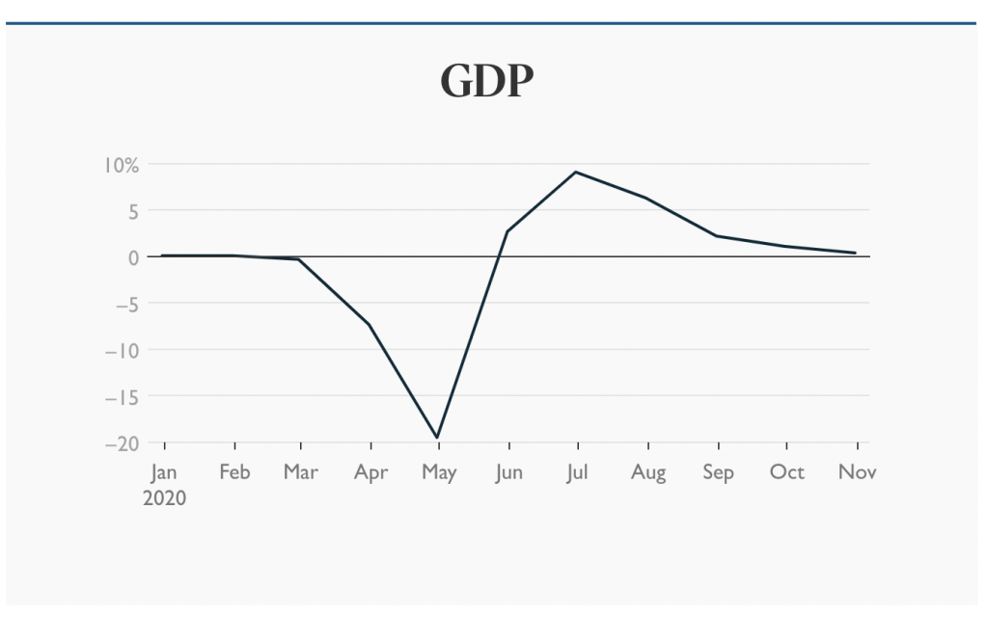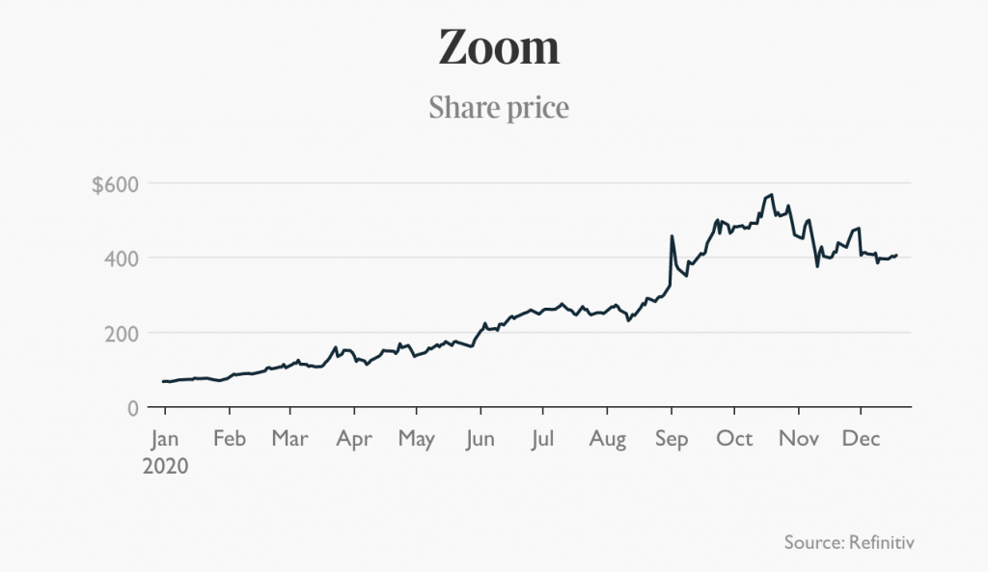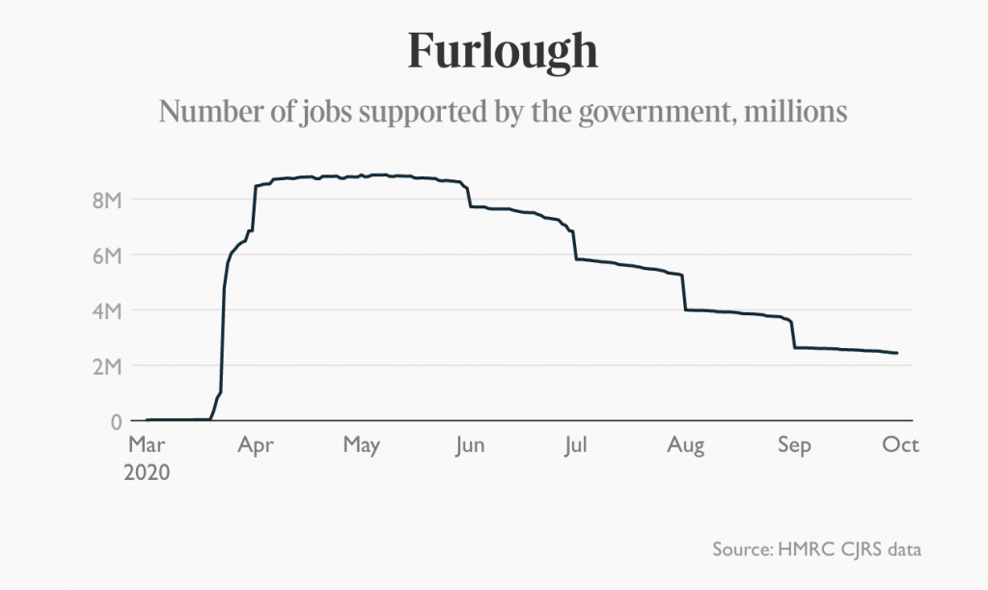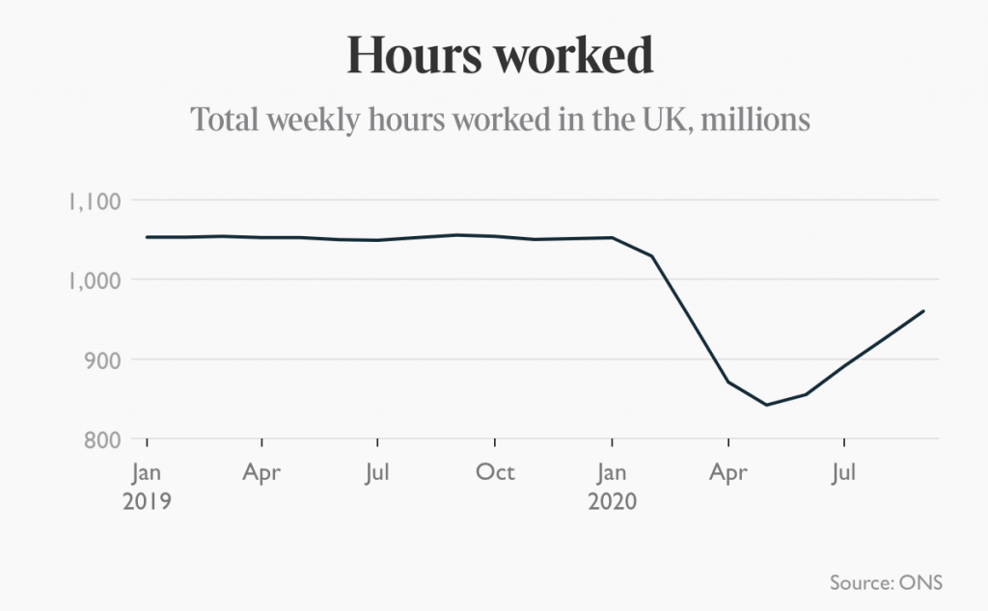Not that this was the company’s intention. Zoom was built for business video conferencing, not socialising. Indeed, Zoom is generally free to use for small gatherings. However, its success in the consumer market helped to drive corporate subscriptions and Zoom’s shares rose rapidly. Investors who bought in at the end of last year and cashed out in late October, just before news of the first vaccines broke, would have made a 735 per cent profit.
Saving jobs
No single piece of policy innovation in the pandemic was more substantial than the furlough scheme (Philip Aldrick writes). At its peak, it was protecting 8.9 million jobs, a third of all 27 million UK employees. Another 2.6 million self-employed workers, half the total, were supported by a separate but similar scheme. All this meant that the government was part-paying the wages of 11.5 million people who could not work.
Between them, the schemes are expected to cost about £85 billion for the 13 months to April 2021. The goal is to protect jobs, which it clearly has. Although about a million more people are out of work, few economists expect mass unemployment any longer. Warnings of 12 per cent unemployment have been replaced by forecasts of only 6 per cent to 7 per cent, making it an expensive but effective policy.

.png?width=943&height=655&name=Screen-Shot-2020-12-28-at-21.37.28-1024x711%20(1).png)

.png?width=988&height=645&name=Screen-Shot-2020-12-28-at-21.39.35-1024x669%20(1).png)




.png?width=988&height=597&name=Screen-Shot-2020-12-28-at-21.45.21-1024x619%20(1).png)